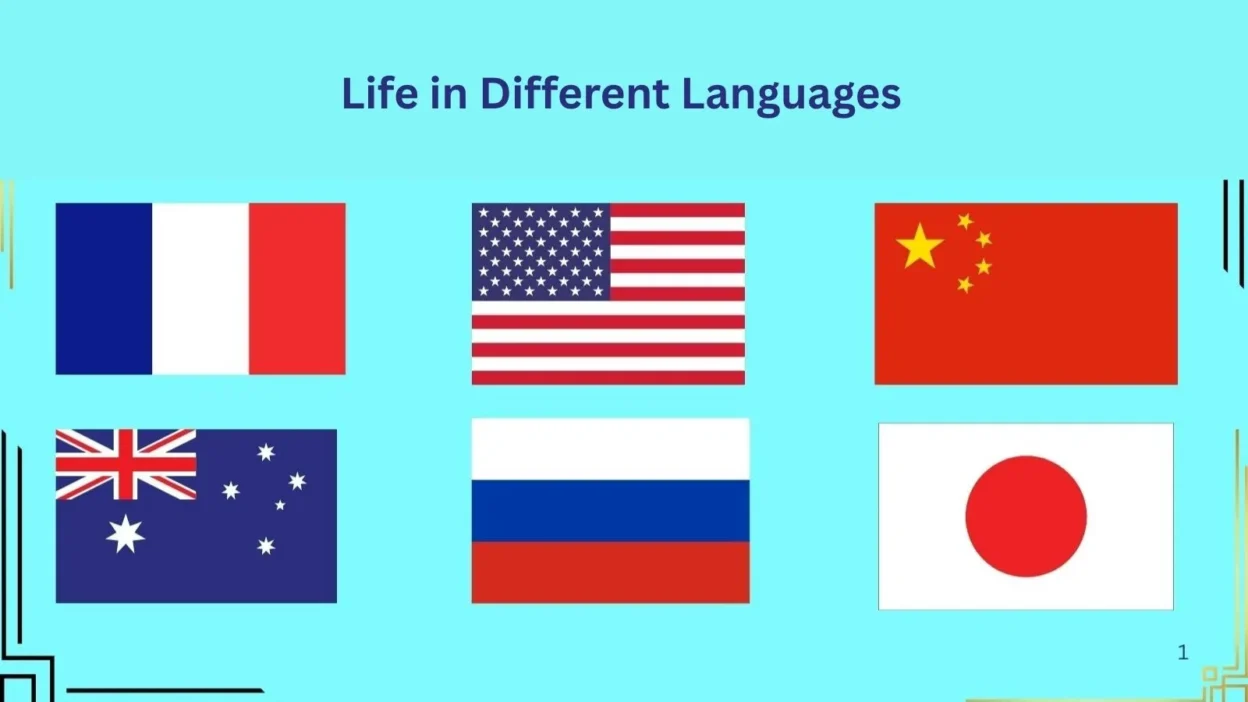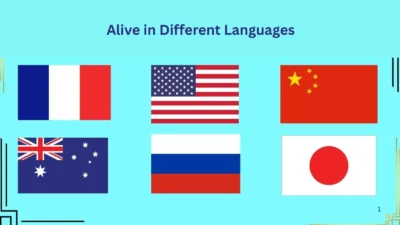Have you ever found yourself wondering how to say the word life in different languages?
Whether you’re a language enthusiast, a traveler, a tattoo lover, or just someone deeply intrigued by the essence of life itself—you’re in the right place.
Many people search this phrase because they want to express something deeply meaningful across cultures. Maybe you’re writing a poem, designing a tattoo, planning a multilingual speech, or simply expanding your vocabulary.
No matter your reason, this blog will help you learn the word life in various languages, understand its core meaning, and use it naturally in sentences.
By the end of this article, you won’t just know how to say “life” around the world—you’ll understand how to use it with confidence and cultural respect.
Why People Search for “How to Say Life in Different Languages”
Here are some common reasons:
- 🧠 Curiosity about languages: Many people love to learn how universal concepts are expressed globally.
- ✍️ Creative expression: For writing, tattoos, art, or lyrics.
- ❤️ Connection: Speaking to someone in their native tongue can show care and respect.
- 🗣️ Language learning: To enrich vocabulary and understand deeper meanings.
The Meaning of “Life”
In English, life is a broad word. It can refer to:
- Biological existence: “Life began in the ocean.”
- Experience: “She lives a good life.”
- Spiritual essence: “Life is a journey.”
- Duration: “A life sentence.”
Different cultures may emphasize different meanings. That’s why translations vary slightly not just in sound, but in emotional tone and depth.
How to Say Life in 50+ Different Languages
Here’s a multilingual guide:
| Language | Word for Life | Pronunciation (English-style) |
| Spanish | Vida | VEE-dah |
| French | Vie | VEE |
| German | Leben | LAY-ben |
| Italian | Vita | VEE-tah |
| Portuguese | Vida | VEE-dah |
| Russian | Жизнь | ZHEEZN |
| Japanese | 生命 (seimei) / 人生 (jinsei) | SAY-may / JIN-say |
| Chinese (Mandarin) | 生命 / 人生 | shēngmìng / rénshēng |
| Korean | 삶 / 인생 | salm / in-saeng |
| Hindi | जीवन (jeevan) | JEE-vun |
| Arabic | حياة (hayat) | ha-YAAT |
| Greek | Ζωή (zoí) | zoh-EE |
| Turkish | Hayat | ha-YAHT |
| Swahili | Maisha | mah-EE-shah |
| Hebrew | חיים (chayim) | kha-YEEM |
| Urdu | زندگی (zindagi) | ZIN-da-gee |
| Persian (Farsi) | زندگی (zendegi) | zen-de-GHEE |
| Thai | ชีวิต (cheewit) | CHEE-wit |
| Vietnamese | Cuộc sống | koo-awk sohm |
| Polish | Życie | ZHIH-cheh |
| Dutch | Leven | LAY-ven |
| Bengali | জীবন (jibon) | JEE-bawn |
| Filipino | Buhay | BOO-hi |
| Malay/Indonesian | Kehidupan | keh-HEE-doo-pan |
| Tamil | வாழ்வு (vaazhvu) | VAAZH-voo |
| Marathi | जीवन (jeevan) | JEE-vun |
| Nepali | जीवन | JEE-vun |
| Icelandic | Líf | LEAF |
| Finnish | Elämä | EH-lah-mah |
| Swedish | Liv | LEEV |
| Hungarian | Élet | AY-let |
| Czech | Život | ZHIH-vot |
| Slovak | Život | ZHEE-vot |
| Croatian | Život | ZHEE-vot |
| Serbian | Живот (život) | ZHEE-vot |
| Romanian | Viață | VYA-tzuh |
| Ukrainian | Життя | zhe-TYA |
| Latvian | Dzīve | DZEE-veh |
| Lithuanian | Gyvenimas | gee-VEH-nee-mas |
| Estonian | Elu | EH-loo |
| Sinhala | ජීවිතය (jeevithaya) | JEE-vi-tha-ya |
| Khmer | ជីវិត (cheevit) | CHEE-vet |
| Burmese | ဘ (ba) | bah |
| Pashto | ژوند (žwand) | zhwand |
| Azerbaijani | Həyat | ha-YAHT |
| Kurdish | Jiyan | JEE-yawn |
How to Use the Word “Life” in Sentences
Here are some simple ways to use these words naturally:
- Spanish: La vida es bella. – Life is beautiful.
- French: La vie est un cadeau. – Life is a gift.
- German: Das Leben ist eine Reise. – Life is a journey.
- Hindi: Zindagi ek safar hai. – Life is a journey.
- Arabic: الحياة جميلة (al-hayat jameela). – Life is beautiful.
- Japanese: 人生は短い (jinsei wa mijikai). – Life is short.
Use these in conversation, art, captions, and reflections.
A Royal Word Across Culture
Have you ever found yourself wondering how to say “queen” in another language—maybe for a creative writing project, naming a character, expressing admiration for someone, or simply satisfying your curiosity?
The word queen carries strength, grace, and authority. It’s more than a title—it’s a symbol. Whether you’re writing a poem, crafting a social media caption, or just exploring global linguistics, knowing how to say queen in different languages can enrich your vocabulary and cultural understanding.
In this blog, we’ll explore the word queen in multiple languages, reveal its meanings and contexts, and show you how to use it in everyday conversation.
You’ll walk away with not only translations, but also a deeper appreciation of how different cultures view and honor the concept of royalty and femininity.
🔍 Why Are People Searching for “Queen” in Different Languages?
People search for this word for many reasons, such as:
- ✨ Creative Naming: Finding exotic or elegant names for businesses, characters, or babies.
- 💬 Cultural Expression: Using terms from other languages to compliment someone, especially women who embody elegance, power, or independence.
- 🌍 Language Learning: Expanding vocabulary for multilingual speakers.
- 👑 Historical Research: Understanding titles of monarchs in world history.
- 💌 Social Media & Poetry: Adding flair and depth to captions, bios, or romantic lines.
This blog helps solve those needs by providing accurate translations, pronunciation tips, and context so you can confidently use the word in real-life conversations or writings.
The Word “Queen” – Meaning & Use
The English word queen refers to:
- A female monarch
- A woman of high rank or status
- A powerful, respected woman (colloquially, e.g., “You’re a queen!”)
The word can be literal (Queen Elizabeth) or symbolic (She’s the queen of style).
Cultural Notes
- In Eastern cultures, the word for life may also tie to karma or fate.
- In Western languages, it’s often associated with vitality, individuality, and time.
- In African cultures, “life” can carry communal, ancestral, or spiritual importance.
Understanding these backgrounds helps you use the word life not just correctly—but meaningfully.
✨ Conclusion
Learning how to say life in different languages opens up a world of emotional and cultural connection.
Whether you’re learning languages, writing poetry, planning a tattoo, or simply celebrating life itself—this list helps you use the word with clarity, beauty, and confidence.
Remember: Life is not just a word. It’s an experience shared across every language and culture.



